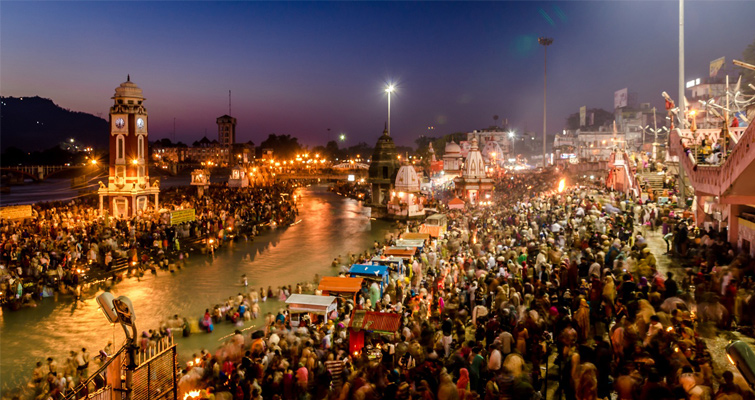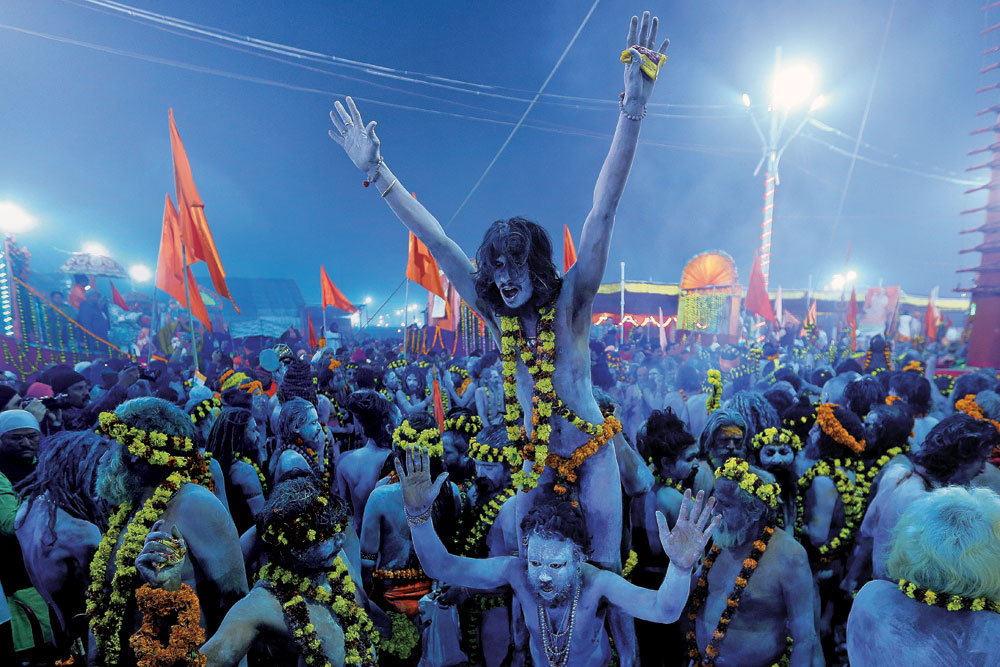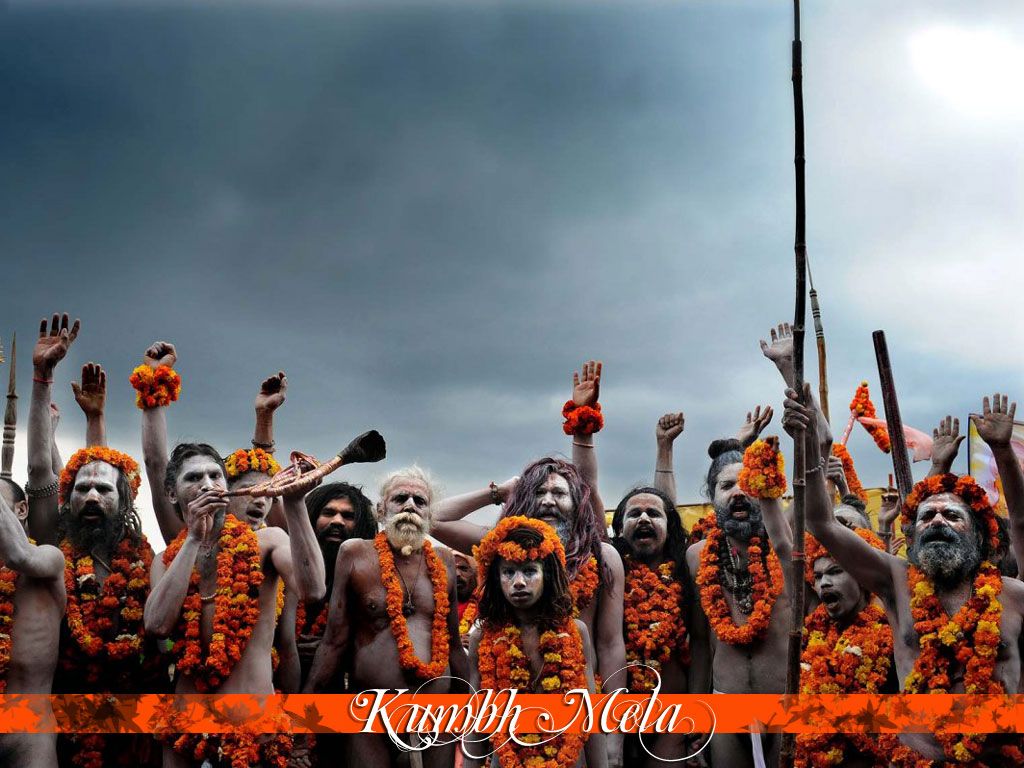The venue for Kumbh Mela is decided according to the position of the Sun, Moon and Jupiter hold in that period in different zodiac signs.
Since then, Kumbh Mela is celebrated with all the ritual beliefs and people from different aspects gather to celebrate the eve.
Some interesting facts about Kumbh Mela
– Kumbh Mela is the largest religious gatherings in the world which is also known as “World’s largest congregation of religious pilgrims”.
– The first written evidence of the Kumbh Mela is mentioned in Bhagvat Purana. Another written evidence of Kumbh Mela is mentioned in the works of Chinese traveller Hsuan Tsang ( or Xuanzang) who visited India in 629-645 AD, during the reign of Harshavardhana. Also, about the Samudra Manthan is also mentioned in the Bhagavata Purana, Vishnu Purana, Mahabharata and Ramayana.
– Amongst the four cities Prayagraj, Nashik, Haridwar and Ujjain, the Kumbh Mela held in Prayagraj is the oldest of all.
– Other activities also took place at the Kumbh Mela with bathing are Pravachan, Kirtan and Maha Prasad.
– No doubt, Kumbh Mela is a major temporary source of earning that gives many people employment.
– In Kumbh Mela, the first bath is lead by the Saints which is known as Shahi Snan of Kumbh and it starts at 3 AM. After the royal bath of the Saint’s common people gets permission to take a bath in the holy river.
– According to Hindu Mythology, it is believed that who take a dip in the holy water of Ganga they are eternally blessed. Not only this, but it also washes the sin and moves them towards the path of salvation.
– The four places or sites of Kumbh Mela is because of the Amrit or an immortal drink that was dropped by Vishnu at these four places.
– The world’s largest gathering Kumbh Mela has been included in the UNESCO’s representative list ‘Intangible Cultural Heritage of Humanity’.
– Kumbh Mela takes place on the dates when the nectar is said to have fallen in the holy river. Every year, the dates are calculated according to the combination of Jupiter, the Sun and the Moon’s zodiac positions.
– Kumbh means ‘nectar’. Kumbh Mela story dates back to the time when gods resided on the earth. They had been weakened by the curse of sage Durvasa and the demons were causing mayhem on the earth.
So, this is the whole story behind the Kumbh Mela and who started it, why and when it is celebrated with some interesting points.
Jupiter takes eleven years, ten months and fourteen days to complete its revolution around sun, so approximately once in twelve years the sun earth and Jupiter align the same way as they were during the great churning. This astronomical alignment in the space causes the water at the four places where the nectar fell on earth to get energized. When one takes a dip in the holy waters during this period of Kumbh it is believed that energies in water can effect a positive change in the mind, body and spirit of human beings, in other words cleanses the life free of the sins. In Hindu culture, the sun and the moon represents human rational mind and intellect, Jupiter known, as guru is the spiritual master. Philosophically when the human mind and intellect are aligned with the guru, the result is the realization of immortality.
Places where the nectar fell on earth happen to be Prayag (Allahabad), Haridwar, Trimbakeshwar-Nashik and Ujjain. Priests at other places have also attempted to boost the status of their tirtha by adapting the Kumbh legends. The places, whose festivals have been claimed as Kumbh Mela, include Varanasi, Vrindavan, Tirumakudal Narsipur Kumbhakonam (Mahamaham) and Rajim (Rajim Kumbh).
The position of the Sun, Moon and Jupiter in different zodiac signs determines the location of the Kumbh in each of the four places.
- Kumbh in Haridwar: When the Sun is in the zodiac sign Aries and Jupiter is in Aquarius it is held in Haridwar. River flowing at Haridwar is Ganga.
- Kumbh in Prayag: When the Sun is in Capricorn and Jupiter is in Taurus, it is held in Allahabad (Prayag). River flowing at Prayag is Triveni sangam (junctions of Ganag, Yamuna, Sarawathi).
- Kumbh in Nasik: When Jupiter enters the zodiac sign Leo it is held in Nasik. It is also held in Nasik, when Jupiter, Sun and Moon enter the zodiac sign Cancer on Amavasya. River flowing at Nasik in Godavari.
- Kumbh in Ujjain: Ujjain, one of the most sacred places in India, is located on the banks of the sacred river Kshipra in the western region of Madhya Pradesh. Kumbh in Ujjain is held when a rare configuration of planets takes place, which happens once in 12 years. When the Sun is in the zodiac sign Aries and Jupiter in the zodiac sign Leo, it is held in Ujjain. Considering its relevance to the zodiac ‘Leo’ meaning ‘Simha’ in Sanskrit, the Kumbh is also referred to as ‘Simhasth Kumbh’.



